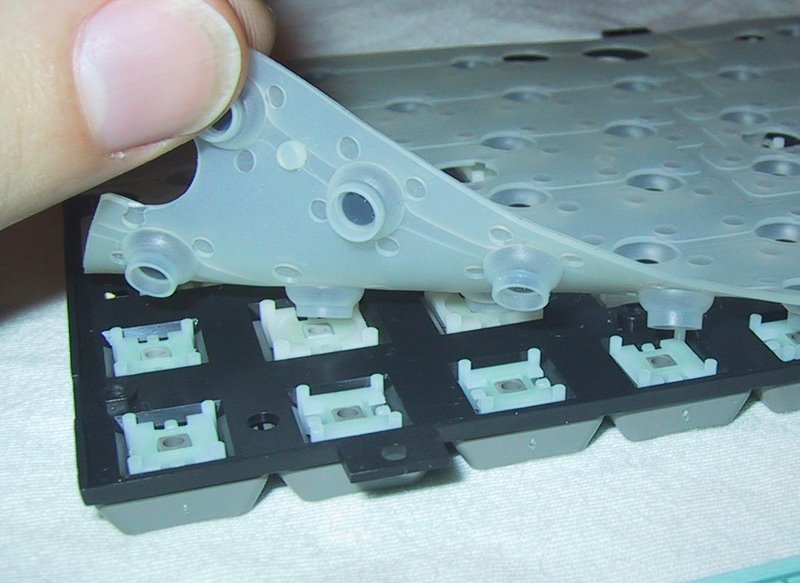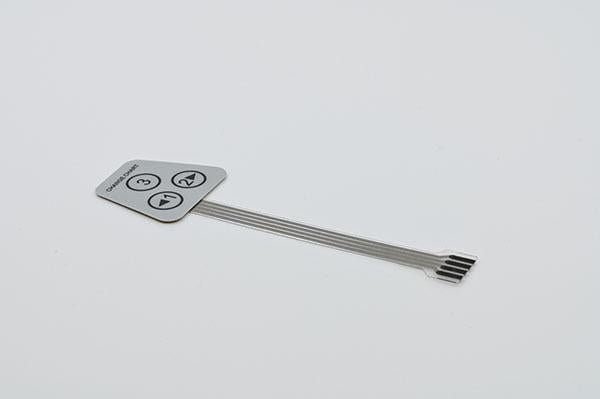The Function of a Membrane Switch in Modern Touch Interfaces and Controls
The Function of a Membrane Switch in Modern Touch Interfaces and Controls
Blog Article
Understanding the Functionality of Membrane Switches for Interface Gadget
The functionality of membrane layer switches over represents a substantial innovation in user interface design, integrating efficiency with visual convenience. As industries significantly prioritize individual experience, understanding the subtleties of membrane button innovation becomes vital.
What Are Membrane Layer Buttons?
Membrane layer switches are ingenious user interface tools that help with user communication with digital devices. These functional elements contain several layers, consisting of a graphic overlay, spacer, and a published circuit layer. The layout enables a smooth assimilation into numerous electronic devices, enhancing both the visual and practical aspects of interface.
Membrane layer switches are frequently used in a variety of applications, from home home appliances to commercial equipment and clinical tools. Their building typically features a slim account, making them a suitable choice for compact styles. The responsive feedback offered by these switches can be crafted to meet details user choices, making certain reliable interaction between the customer and the device.
Sturdiness is one more substantial advantage of membrane layer buttons, as they are resistant to dirt, moisture, and chemicals, which boosts their lifespan sought after atmospheres. Furthermore, these buttons can be customized in regards to form, size, and visuals style, permitting branding and user-specific features. In general, membrane switches represent a useful option for boosting user experience in electronic devices, integrating performance with aesthetic allure in an effective way.
Exactly How Membrane Layer Switches Job
Operating on a simple concept, membrane layer changes utilize a layered building to register individual input efficiently. Each switch contains numerous layers, consisting of a printed circuit layer, a spacer layer, and a leading visuals layer, which are created to function with each other flawlessly. When a customer presses the leading layer, it presses the spacer layer, bringing the conductive aspects of the circuit layer into call with each various other.
This contact develops a shut circuit, signaling the gadget to perform a certain feature. The style allows for different arrangements, consisting of responsive comments, which can enhance the user experience by supplying a physical experience upon activation. The products used in membrane switches typically include adaptable substratums, such as polyester or polycarbonate, which ensure toughness and resilience versus damage.

Key Benefits of Membrane Layer Switches

Another substantial advantage is their density. Membrane layer switches are thin try here and light-weight, which allows manufacturers to save area in their tools without compromising performance. This feature is particularly beneficial in applications where weight and quantity are critical considerations.
In addition, membrane switches are resistant to dirt, moisture, and chemicals, enhancing their sturdiness. This durability prolongs their life-span and minimizes the requirement for constant replacements, causing cost savings over time.
Moreover, the tactile feedback offered by membrane layer buttons can be optimized to enhance customer communication. They can include functions such as link raised buttons or distinct clicks, improving use and customer experience.
Applications Throughout Industries
Interface tools using membrane layer switches prevail in a vast selection of sectors, showcasing their flexibility and performance. Membrane Switch. In the medical market, membrane layer switches are important to gadgets such as diagnostic equipment and patient monitoring systems, where their toughness and simplicity of cleansing are critical for preserving hygiene standards. Likewise, in the automobile industry, these buttons are used in control panel controls and infomercial systems, supplying a smooth and modern-day interface for users.
In addition, the customer electronic devices field advantages from membrane layer buttons in home appliances and portable tools, where small design and easy to use interfaces improve user experience. Industrial applications likewise utilize membrane switches for control board in equipment and automation systems, stressing their effectiveness and resistance to extreme environments.
In the aerospace and protection sectors, membrane switches are utilized in cockpit controls and equipment, where integrity and performance under extreme conditions are critical. In addition, the pc gaming market progressively integrates membrane layer buttons in controllers and arcade machines, adding to an interesting user experience. On the whole, the adaptability of membrane changes allows their prevalent use throughout various sectors, emphasizing their relevance in modern interface layout.
Future Trends in Membrane Layer Switch Technology

Furthermore, the use of innovative materials, such as polycarbonate and polyester movies, is anticipated to climb, giving boosted longevity and resistance to ecological stressors. These products contribute to the total longevity of membrane buttons, making them check it out appropriate for harsher commercial applications.
Furthermore, the unification of clever technology, including IoT connectivity, will certainly make it possible for membrane buttons to interact with various other devices and systems, assisting in a more interactive individual experience. This pattern aligns with the expanding demand for clever gadgets throughout different sectors, from healthcare to customer electronics.
Lastly, personalization choices are anticipated to increase, permitting manufacturers to create bespoke solutions customized to specific individual requirements and preferences. These advancements will certainly place membrane buttons as essential parts in the advancement of interface innovation.
Final Thought
Finally, membrane switches represent a critical innovation in interface innovation, supplying a trusted and functional service for diverse electronic applications. Their layered building facilitates portable style, while attributes such as tactile comments enhance customer interaction. The longevity versus ecological variables further solidifies their utility throughout several markets. As advancements in material science and touch noticing modern technologies continue, the capability and applicability of membrane layer switches are expected to broaden, reinforcing their relevance in modern electronic gadgets.
Report this page